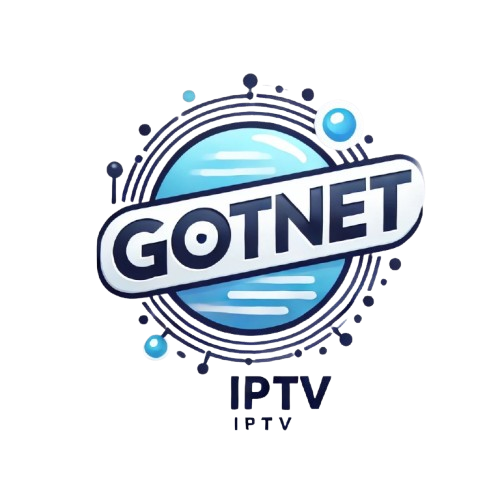GotNET
Exploring IPTV: Multi-Device Viewing Capabilities Explained
In recent years, the way we consume television content has undergone a significant transformation, thanks to the emergence of Internet Protocol Television (IPTV). This technology enables users to stream their favorite shows, movies, and live broadcasts over the internet, offering a more flexible and customizable viewing experience than traditional broadcast methods. One of the standout features of IPTV is its multi-device viewing capabilities, which allow users to access content across a variety of platforms. This article aims to explore the intricacies of IPTV, its multi-device viewing functions, and the overall user experience it provides.
Understanding IPTV: A Comprehensive Overview of Technology
IPTV stands for Internet Protocol Television, a digital television broadcasting method that utilizes internet protocols to deliver television content. Unlike traditional methods such as cable or satellite, which rely on a fixed transmission signal, IPTV allows for content to be delivered over a broadband internet connection. This means that viewers can access a vast array of programming directly from their internet-enabled devices, be it a smart TV, computer, tablet, or smartphone. With the rise of high-speed internet access, IPTV has become a viable alternative to conventional television services.
The technology behind IPTV involves a complex system of servers, middleware, and content delivery networks. IPTV providers encode video content in real-time, converting it into compressed data packets that can be sent over the internet. These packets are then decoded by the user’s device, allowing for smooth playback. IPTV can offer various types of content, from live television broadcasts to on-demand movies and series, enhancing the overall versatility of the viewing experience. Furthermore, IPTV services can provide additional features such as video-on-demand (VOD), catch-up TV, and time-shifted viewing, which allows users to watch shows after they have aired.
One of the most appealing aspects of IPTV is its ability to leverage the internet for content distribution, which can lead to reduced costs for both providers and consumers. Since IPTV does not rely on physical transmission infrastructures like cable or satellite, it can deliver high-quality programming at competitive prices. The capability to offer personalized viewing experiences, including tailored channel selections and user-friendly interfaces, has also made IPTV an attractive option in the modern media landscape.
Multi-Device Viewing: Seamless Streaming Across Platforms
One of the hallmark features of IPTV is its multi-device viewing capabilities, which enable users to enjoy content on various devices without sacrificing quality or convenience. Whether users prefer to watch their favorite shows on a large smart TV, a laptop, or even a mobile device, IPTV makes it possible to access programming seamlessly across platforms. This flexibility is particularly valuable in today’s fast-paced lifestyle, where viewers are often on the move.
Multi-device viewing is facilitated by the use of apps and web-based interfaces that are compatible with a wide range of devices. IPTV providers often develop dedicated applications for smartphones and tablets, allowing subscribers to watch live broadcasts or on-demand content from anywhere with an internet connection. This means that viewers can easily switch from one device to another, picking up right where they left off without any interruptions. Such integrations not only enhance user satisfaction but also cater to the growing trend of mobile consumption.
Moreover, the synchronization across devices often includes features like multi-user profiles and personalized recommendations. This allows different family members or household members to create their own viewing experiences tailored to their interests. With the rise of Smart TVs, streaming devices, and mobile platforms, the ability to access IPTV services from multiple devices enhances the overall value proposition of IPTV, making it a preferred choice for many consumers.
Enhancing User Experience: Features and Benefits of IPTV
IPTV is not merely a new way to watch television; it also comes packed with features designed to enhance the user experience significantly. One of the most notable advantages is the inclusion of interactive features, such as electronic program guides (EPGs), which allow users to navigate through channels and schedules with ease. This level of interactivity empowers users to make informed choices about their viewing, ensuring they never miss their favorite shows.
In addition to interactivity, IPTV services often include advanced functionalities like pause, rewind, and fast-forward capabilities for live broadcasts. This means that viewers can take a break without missing crucial moments, returning to their programming with the ability to catch up on what they may have missed. Furthermore, many IPTV providers offer video-on-demand services that enable users to access a vast library of films and series at their convenience, catering to the on-demand culture that has taken over media consumption.
The benefits of IPTV extend beyond just content variety and accessibility; they also encompass improved picture and sound quality. As IPTV leverages high-speed internet for streaming, users can enjoy high-definition (HD) and even 4K quality, provided their devices support it. This level of quality ensures that the viewing experience is immersive, making IPTV a compelling choice for cinephiles and sports enthusiasts alike. Overall, the features and benefits of IPTV culminate in a rich, user-centric platform that continues to evolve with technological advancements.
In summary, IPTV represents a significant evolution in the way we consume television content, offering unparalleled flexibility and convenience through its multi-device viewing capabilities. By leveraging advanced internet technology, IPTV not only provides a diverse range of programming options but also enhances the user experience with interactive features and superior quality. As consumers increasingly seek personalized and accessible viewing experiences, IPTV stands out as a modern solution to meet these demands, shaping the future of television in a digital age. With its continued growth and innovation, the potential for IPTV to redefine media consumption remains vast and promising.
